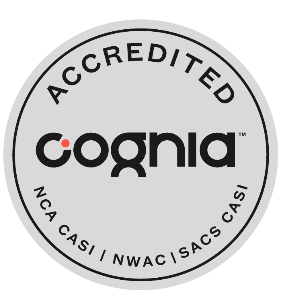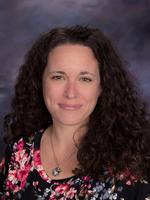Who are Refugees?
According to the 1951 United Nations Convention Relating to the Status of Refugees, a refugee is “a person who owing to a well-founded fear of being persecuted for reasons of race, religion, nationality, membership of a particular social group, or political opinion, is outside the country of their nationality, and is unable to or, owing to such fear, is unwilling to avail him/herself of the protection of that country.”
Refugees come to the U.S. to escape persecution or dangerous situations such as war in their own country. They often leave their homes quickly, possibly fleeing danger. They rarely have time to make any arrangements, gather important documents, or say good-bye to loved ones. In fact, depending on the situation, they may leave their home and not know the fate or whereabouts of their family members, which causes a lot of stress. They often live in refugee camps in neighboring countries while waiting for their application for resettlement to be processed. The camps vary in the support and resources provided. Some camps may be well-established and have organized housing, food distribution, and education opportunities, while others may lack even the basics of clean water and sanitation. When refugees arrive in the U.S. they receive services and support from one of the ten national voluntary agencies that have contracts with the U.S. government in the U.S. Refugee Admissions Program. They often have to learn a whole new culture and language without the support of extended family.
Challenges Faced by Refugees
Mental health is an area of concern for resettled refugees. Due to the extremely stressful circumstances typically associated with their departure from their own country and their journey to the U.S., Posttraumatic Stress Disorder is a real concern when assisting refugees. Post-Traumatic stress disorder (PTSD) is an anxiety disorder that can develop after exposure to one or more terrifying events in which grave physical harm occurred or was threatened. It is a severe and ongoing emotional reaction to an extreme psychological trauma. This stressor may involve someone’s actual death or a threat to the patient’s or someone else’s life, serious physical injury, or threat to physical and/or psychological integrity, to a degree that usual psychological defenses are incapable of coping.
Signs and symptoms of PTSD, as listed on the website www.kidshealth.org include:
- sleeplessness
- nightmares
- inability to get along with others, particularly in close relationships
- paranoia and distrust
- unwillingness to discuss or revisit in any way the site of the trauma
- persistent, intense fear and anxiety
- feeling easily irritated or agitated
- having difficulty concentrating
- feeling numb or detached
- no longer finding pleasure in previously enjoyable activities
- feeling helpless or “out of control”
- experiencing intense survivor guilt
- being preoccupied with the traumatic event
- physical symptoms such as headaches, gastrointestinal distress, or dizziness
- suicidal thoughts, plans, or gestures
More information about how to assist refugees who are suffering from PTSD is available from the National Child Traumatic Stress Network. If refugee students or their family members display these symptoms, it is important that the school and/or their sponsoring organization assist them in getting professional help and treatment. Work with school social workers or counselors to help students who are experiencing PTSD.
Limited Formal Education
Refugees often have lived for many years in a country with an unstable infrastructure due to extreme poverty, war, or disasters. This means that many children (and adults) may not have had an opportunity to attend school and learn basic skills in their own language. For older children and adults this can significantly affect their learning when they begin school in the U.S. In my district for example, we have many Somali students who begin ninth grade and have never learned to write in their own language — this presents an additional challenge when learning new vocabulary and English script. Students with interrupted formal education are not less intelligent than other students their age, and they do not need special education referrals to address these issues. They simply need an opportunity to learn basic skills and receive very skilled and intentional instruction to accelerate their learning. For high school students, they must complete in four years what mainstream students have 13 years to finish. (To read more about how to assess whether ELL students need Special Education services, see How to Address Special Education Needs in the ELL Classroom.)
I would also like to underscore that refugee students do not come to us “knowing nothing,” as I have heard some teachers express in frustration. It may seem that way when they are compared with other students their age, but refugee students have learned skills in survival and decision-making through intense exposure to dramatic global issues that most of their peers probably have not experienced. They are capable of learning English and the skills necessary to be successful academically; it will just take longer than mainstream students and even other ELL students who have had formal education in their own language in their home country.
Lack of Documentation
Because refugees leave their homes due to crisis, they rarely have important documents with them that assist them in navigating U.S. culture. Refugees may lack birth certificates, vaccination records, marriage certificates, and educational transcripts. Most of these items are re-created and certified through the U.S. government resettlement process, but there still may be mistakes. Birth certificates may have incorrect years on them, and students may actually be older or younger than expected for a certain grade level. It is also interesting to note that some cultures do not place such importance on birthdays and documentation of birth, so when the refugee application is processed they are often given a birthday of January 1st. This may cause confusion in school records when the district enrollment shows two Mohamed Mohamed’s that have the same birth date. Working with these records requires careful attention on everyone’s part, particularly counselors and school administrators.
One area that has been especially challenging in our district is the acceptance of high school transcripts from other countries. When placing ELL students in high school courses, counselors evaluate their transcript to determine if they have already successfully completed some required courses and to determine correct grade-level placement. If a student successfully completed biology in the home country, he or she does not need to take it again just because it is in English. Verifying transcripts from other countries can be difficult, especially when they are from educational institutions in countries that have experienced a lot of turmoil. The majority of refugee students who come to my district do not have a transcript from their own country, and even if they say they have completed required courses, counselors have no way to give credit for it. If a newly enrolling high school ELL student does not have an official transcript he or she is automatically placed in 9th grade. This has caused some distress in refugee students (especially older teens) who want to complete high school quickly and move on to college. Counselors who work with the student and family, however, can help them understand the benefits of four years of free schooling in English before they enroll in college.
Parent Outreach
As educators we also have an opportunity and a responsibility to help refugee parents understand the U.S. educational system and how they can best help their child succeed. In many other countries, the teacher is responsible for educating the child, and the parent is not expected to be involved. It is very different in the U.S., and refugee parents may not understand the expectations. Depending on their cultural background, they may be confused as to why the teacher would expect the parents to assist in educating their child. I cannot emphasize enough the importance of having a bilingual staff member or family liaison in your school to communicate effectively with refugee families and address areas of concern. The organization Bridging Refugee Youth & Children’s Services (BRYCS) offers some ideas in Involving Refugee Parents in Their Children’s Education.
Resettlement Challenges
The federal government places refugee families in specific states and provides basic support for their resettlement. A representative from a local agency often identifies a place for the family to live when they arrive, and assists them with initial integration into the culture. Though refugees are entitled to a small amount of cash assistance upon arrival and are eligible to apply for additional time-limited assistance, it is necessary for most refugee adults to look for work very soon after arrival. Children are enrolled in school, and adults are encouraged to take ESL classes to learn English. As the family adjusts to their new life, they may decide that there are better opportunities in another part of the U.S. and relocate to another state. This has happened often in Minnesota, where family members have relocated to the Twin Cities area to be with other family members.
Social service agencies often recognize the extensive needs of refugee families and enlist the services of translators, health professionals and established community members from the refugee’s country to provide the necessary assistance. A common area of concern in Minnesota is helping refugees (who mainly arrive from very warm climates) to find and wear appropriate clothing for the cold weather. Some of the things that we take for granted, such as how to turn on a stove or pay an electric bill, may be very challenging for refugee families, and they need support to learn the skills they will need in their new country (Source: Colorin Colorado, 2008).
CSD Refugee Enrollment Process
- Refugee Enrollment Process
- Example of School’s Welcoming Process
School Orientation Videos
English
Spanish
Newcomers
- Suggestions for Supporting Newcomers in the classroom. Some general suggestions for supporting K-12 Newcomers in the Mainstream Classroom.
- Holiday list refugee students may Celebrate. This is a list of holiday celebrations among refugees commonly settled in Salt Lake City through the International Rescue Committee (IRC).
Resources for Specific Languages:
- Welcome Survey. Get to know your student with this Welcome Survey translated into Arabic.
- First Words. A list of First Words such as Hello, Goodbye, Please, Yes and No.
- Numbers 1-12. Arabic numbers 1-12
- Q & A. Common classroom questions and responses. (i.e. How are you? Do you understand?).
- Useful Classroom Instructions. A list of common classroom instructions (i.e. Open the book. Listen.).
- Website List. A list of websites to support classroom teachers supporting Arabic speaking students.
- Elementary
- Grades 3-5 Math Terms. Elementary glossary of math terms (approximately grades 3-5)
- Elementary Science Terms. Elementary glossary of science terms (approximately grades 3-5).
- Elementary Social Studies Terms. Elementary glossary of social studies terms (approximately grades 3-5).
- Secondary
- Basic Terms. An abbreviated pronunciation guide taken from the book Kinyarwanda for Beginners.
- Phrase Book. Hundreds of common phrases translated into Kinyarwanda with pronunciations.
- Welcome Survey. Get to know your student with this Welcome Survey translated into Portuguese.
- Web Resources List. A list of websites to support classroom teachers supporting Portuguese speaking students.
- Welcome Survey. Get to know your student with this Welcome Survey translated into Portuguese.
- Web Resources List. A list of websites to support classroom teachers supporting Portuguese speaking students.
- Welcome Survey. Get to know your student with this Welcome Survey translated into Spanish.
- Elementary
- Common Spanish School Phrases & Cognates. Common classroom phrases and cognates (words that sound similar in English & Spanish). Retrieved from: http://www.colorincolorado.org/sites/default/files/ELL_Starter_Kit_for_Educators.pdf.
- Elementary Science. Elementary glossary of science terms (approximately grades 3-5).
- Math Glossary. Elementary glossary of math terms (approximately grades 3-5).
- Social Studies Glossary. Elementary glossary of social studies terms (approximately grades 3-5).
- Room Signs. Classroom labels retrieved from: http://www.environments.com/community/landing.aspx?campaignid=1998.
- Secondary
- Survival Swahili. Common Survival phrases with pronunciations (i.e. Yes. No. Help.).
- Phrases with Pronunciations. Swahili phrases for greeting people with pronunciations (i.e. Thank you. Good Morning).
- Swahili Language Guide. A traveler’s guide of common words with pronunciations.
Immigrant
An immigrant is a foreign national who is issued a visa to live and work permanently in the United States. In most cases, a relative or employer sponsors the individual by filing an application with U.S. Citizenship and Immigration Services (USCIS).
Immigrants come to the U.S. for a variety of reasons, such as joining family members or for educational and work opportunities, but not because they have a fear of persecution in their native country. They usually have time to make arrangements to leave their country — selling or renting their home, gathering important documents, making travel arrangements, and saying good-bye to loved ones. Oftentimes they are sponsored by family members who will assist them with basic needs and adjustment to U.S. culture when they arrive.
Resources:
For more information or to schedule trainings specific on how to support the academic and social emotional needs of students on Refugee status, please contact Beverly Herrmann at 801-826-5454 or Beverly.Herrmann@canyonsdistrict.org.








